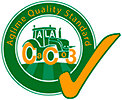A project-specific classification of sinkholes has been developed based on surface morphology, meaning it can be applied readily through visual inspection of a sinkhole or suspected sinkhole, aided by knowledge of surface water management. The three project-specific classes of sinkhole are described and illustrated below.
The majority of the Class A and B sinkholes that have been identified within the vicinity of the quarry are believed to have originally developed in association with surface water flow, even where water was not apparent during field walkover inspections.
If you have noticed any changes that you think would be helpful to log, please do so here or you can contact Glendinning via General Enquiries on our contact page.
All karst notifications received will be reported by E & JW Glendinning in an annual report to the Mineral Planning Authority (the DNPA). Sinkholes reported will be inspected and documented by E & JW Glendinning or its representative as part of the next scheduled ground surface monitoring survey. Monitoring Surveys take place twice yearly: once in March to April and once in September to November. Sinkholes that are assessed to have developed will be documented and added to the map of sinkholes and table of mapped sinkholes. The updated map and table will form part of the annual report from E & JW Glendinning to the Mineral Planning Authority.







